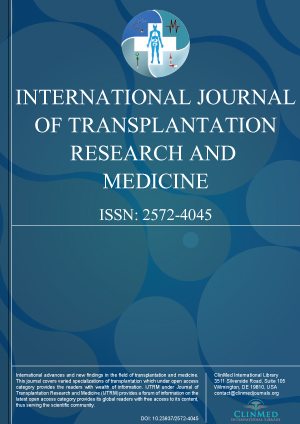Open Access DOI:10.23937/2572-4045.1510019
Influence of Metronidazole on Oral Busulfan Test Dose
Francine Attie de Castro, Vera Lucia Lanchote and Belinda Pinto Simoes
Article Type: Case Report | First Published: June 30, 2016
Individualization of busulfan (BU) dosing during pre-transplant conditioning for hematopoietic stem cell transplantation (HSCT) has been performed worldwide for more than a decade. The pharmacokinetic parameters of BU show high variability and studies report that high plasma concentrations (> 900 ng/mL) are associated with sinusoidal obstructive syndrome (SOS), whereas low plasma concentrations (< 600 ng/mL) are associated with graft rejection and/or disease recurrence....
Open Access DOI:10.23937/2572-4045.1510018
Pharmacological Conditioning of Brain Dead Donor Hearts with Erythropoietin and Glyceryl Trinitrate: Clinical Experience
Gayathri Kumarasinghe, Arjun Iyer, Mark Hicks, Alasdair Watson, Hong Chew, Ling Gao, Jeanette Villanueva, Andrew Jabbour, Eugene Kotlyar, Christopher S Hayward, Anne M Keogh, Emily Granger, Paul C Jansz, Kumud K Dhital, Peter S Macdonald and Phillip Spratt
Article Type: Review Article | First Published: April 01, 2016
With the increasing success of heart transplantation, older and higher-risk donors and recipients are being accepted for transplantation. The risk of primary graft dysfunction (PGD) is thus increased. We investigated a 'pharmacological conditioning' strategy, where Celsior preservation solution supplemented with glyceryl trinitrate (GTN) and erythropoietin (EPO) was used for cardioplegia and hypothermic storage, and determined graft recovery and patient survival after cardiac transplantation....
Open Access DOI:10.23937/2572-4045.1510017
Skin Lesions after Kidney Transplantation: An updated Review Including Recent Rare Cases
Ethem Unal
Article Type: Review Article | First Published: February 28, 2016
Skin disease is a significant cause of morbidity in chronically immunosuppressed patients, including organ transplant recipients. Cutaneous neoplasms are much more common in renal transplant recipients than in the general population, and are the most common malignancies in these patients. Better surgical techniques and recent advances in immunosuppressive therapy allow patients to survive for many years, free from any complications due to rejection....
Open Access DOI:10.23937/2572-4045.1510016
Blockade of ASC but not NLRP3 Inhibits DC Proliferation and T cell Activation in Response to Alloantigen
Sashi G Kasmisetty, Alana Shigeoka, Reza Elahimehr, Andrew Scheinok and Dianne B McKay
Article Type: Research Article | First Published: January 16, 2016
The NLRP3 inflammasome is a multimeric protein complex consisting of the sensor molecule NACHT, LRR and PYD domains-containing protein 3 (NLRP3), the adaptor molecule Apoptosis-associated speck-like protein containing a caspase recruitment domain (ASC) and caspase-1. Molecules with conserved molecular motifs trigger the assembly of the inflammasome and lead to maturation of pro-inflammatory cytokines that induce a mature inflammatory response. Emerging data suggest that inflammasome activation i...

